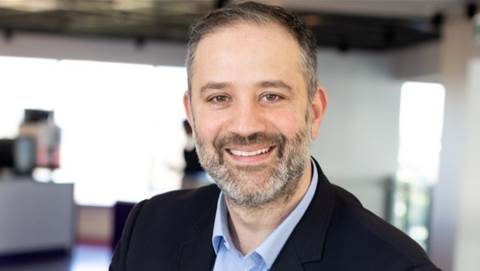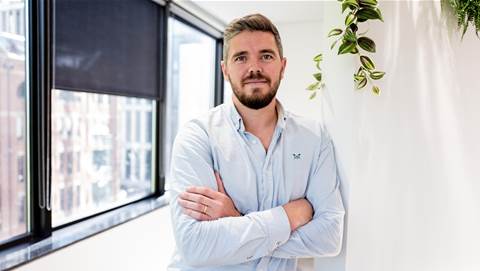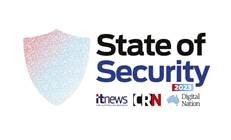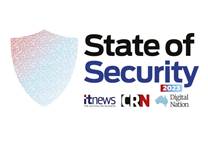Virgin Australia is using an enterprise architecture ‘brain’ to inform technology investment decisions and ensure a multi-year, multi-million-dollar IT transformation stays on course.

The airline commenced its technology transformation at the start of 2021, not long after relaunching, with the aim of addressing accumulated tech debt and preparing it for the future.
“Two years ago, 40 percent of our business-critical application estate was end-of-life or unsupported,” head of technology Emma Taylor told the recent LeanIX Connect Summit APAC.
“Roughly 40 percent was ‘amber’. which meant it needed attention in the next 12-18 months, and the remainder was ‘green’.”
The airline had accumulated substantial tech debt due to a decade of underinvestment in IT.
While it now had transformation ambitions, remediation of some underlying infrastructure and IT components was needed, along with a common understanding for how these various components underpinned applications powering the airline’s operations and customer experience.
Taylor joined in May 2021, initially leading strategy and architecture before broadening her role after a year.
Her first task was to “establish an enterprise architecture” repository for the airline.
“At that time I joined, we had one enterprise architect, we had minimal documentation, all the reporting or all the artifacts that we were generating for our board and our executive team were manual, and the information was very subjective,” Taylor said.
“We needed to deliver transformation at scale, at a fast pace, and I needed to somehow very quickly stand up a big team [and] churn out all our architecture artifacts to support the 50-plus projects that our organisation wanted to deliver at the same time.
“So, I was facing this knowledge conundrum: how do I ramp up the team, get them to know enough about our current systems, and get them off onto projects and delivering?”
That led to Virgin Australia standing up LeanIX as its enterprise architecture repository - or, as Taylor calls it, the “architecture brain”.
“I think of it as like this humming, pulsing, living source of all of our collective information from all of our architects at Virgin Australia,” she said.
“LeanIX is our single source of truth that incorporates everything from high level information on our transformations to granular detail on our IT components.
“All the current state is mapped out there for you, so you can get very quickly start thinking about where you need to take a solution or what is your target state for any particular project, and not spend too much time” determining what’s already in place.
LeanIX is kept up to date by being embedded into internal architectural processes.
“Some of the challenges often faced with EA repositories is keeping the information up-to-date and current, so that people who use the repository can trust it,” Taylor said.
“We’ve embedded it into the process. You can’t do your solution architecture work or your architecture work at Virgin Australia without using LeanIX.”
‘Placemat’ view
Virgin’s board was accustomed to being presented with a placemat-like PowerPoint slide showing the organisation’s tech debt, with a traffic light system to indicate status.
Taylor said early versions of the ‘placemat’ were a “very manual, subjective, colouring-in exercise”, with an amount of guesswork in the status colour selections.
The visualisation is now produced using a tech health metric within LeanIX.
“It’s a bit more objective now - helping our board see at a very quick glance the tech health and risk we’re carrying with our IT landscape,” Taylor said.
LeanIX also powers several visualisations that aim to show the airline’s executives and board how tech health is expected to change over the next two years, and how the sequencing of transformation initiatives and other tech investments would alter that trajectory.
A ‘slider’ can be used to project the tech health of business-critical applications over the next two years, assuming that all transformation or upgrade projects that are on the roadmap are delivered.
“[This] helps us give our people, our execs, our project managers, our business analysts [a view of] what the IT landscape is going to look like [in] six months, 12 months, or two years,” Taylor said.
This is really important because having this kind of feature has helped us have conversations with our GMs and execs around scenarios. So, there’ll be questions like, ‘What’s going to happen if I don’t do project A B and C?
“Very quickly, we’re able to show that if they don’t do these three projects, this is what’s going to happen to the IT landscape.”
The visibility also helped to drive investment conversations, where the health of a business-critical application, or a component of one, may be predicted to degrade over time, without a corresponding improvement initiative planned.
“The aim is to try and get as much of that business-critical application set healthy - as ‘green’ - as possible,” Taylor said.
“If we see applications that are still showing as unhealthy when we look forward a couple of years, that generates a conversation with our GMs or executive team to say, ‘What kind of project do we need to put on our roadmap or what kind of investment do we need to make to turn that system green?’”
Taylor recalled the use of the placemat in an IT steering committee meeting. Presented with a business case for a project that appeared to lack return-on-investment, revenue-generation or cost-out capability, the placemat became the determining factor for the investment, showing the system was in danger of moving to an unhealthy state over time.
“The placemat was used, the decision was made, and I felt super proud, and I couldn’t wait to tell the rest of the [architecture] team,” Taylor said.
Taylor indicated that the airline hoped to have more risk-based conversations around its technology in the future and is already setting itself up to add new dimensions to its decision-making, such as factoring in end-of-life dates.
“We’ve mapped all of our applications to their underlying IT components, and the benefit of doing that is we can automatically draw in, with magic of LeanIX, all the end-of-life dates and all the currency from those underlying IT components,” Taylor said.
“I don’t know how many of you have spent hours googling or trawling when the end-of-life date is for Windows Server [for example] - all of that is pulled in and we can see the full stack view.
“We have the application, we know what OS it runs on, the database or which cloud it’s living in, and very quickly this [full stack] view is generated for us.”
Taylor said that Virgin Australia had seen a “40 percent improvement in the health of business-critical systems” in the past two years, coinciding with the transformation effort, but also the existence of the enterprise architecture.
“We’ve improved a lot of tech debt in our organisation in the past two years,” she said.
“That 40 percent equates to us either migrating, upgrading or replacing roughly eight to ten of our business-critical systems.
“These are big systems, so this is an amazing achievement over the past two years.”
Taylor added that Virgin Australia still has “a lot to accomplish on our enterprise architecture journey, but I’m so proud of what my team have achieved so far.”

.png&h=140&w=231&c=1&s=0)

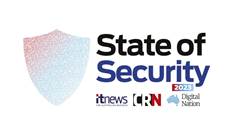




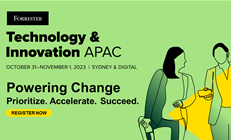 Forrester Technology & Innovation APAC 2023
Forrester Technology & Innovation APAC 2023





